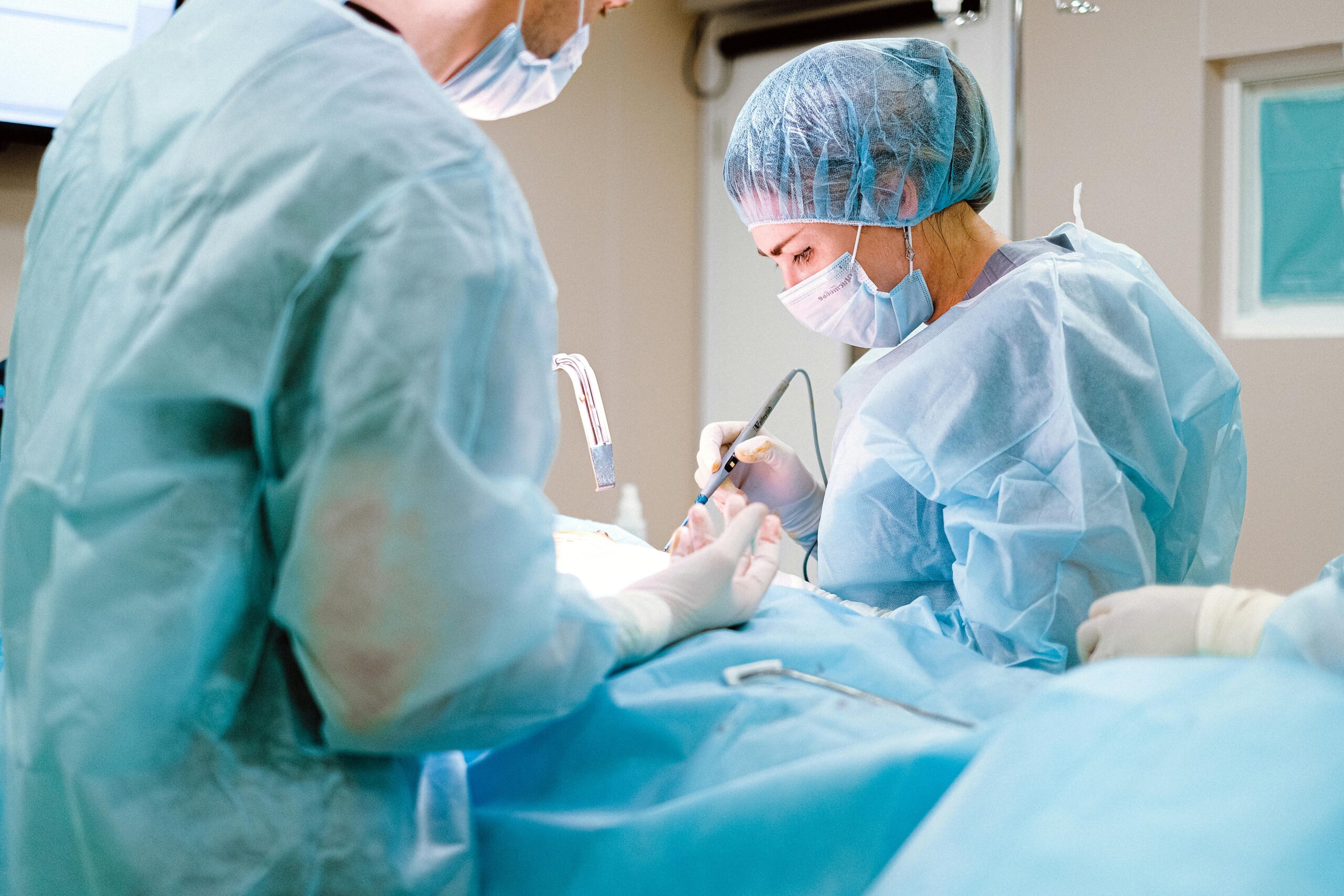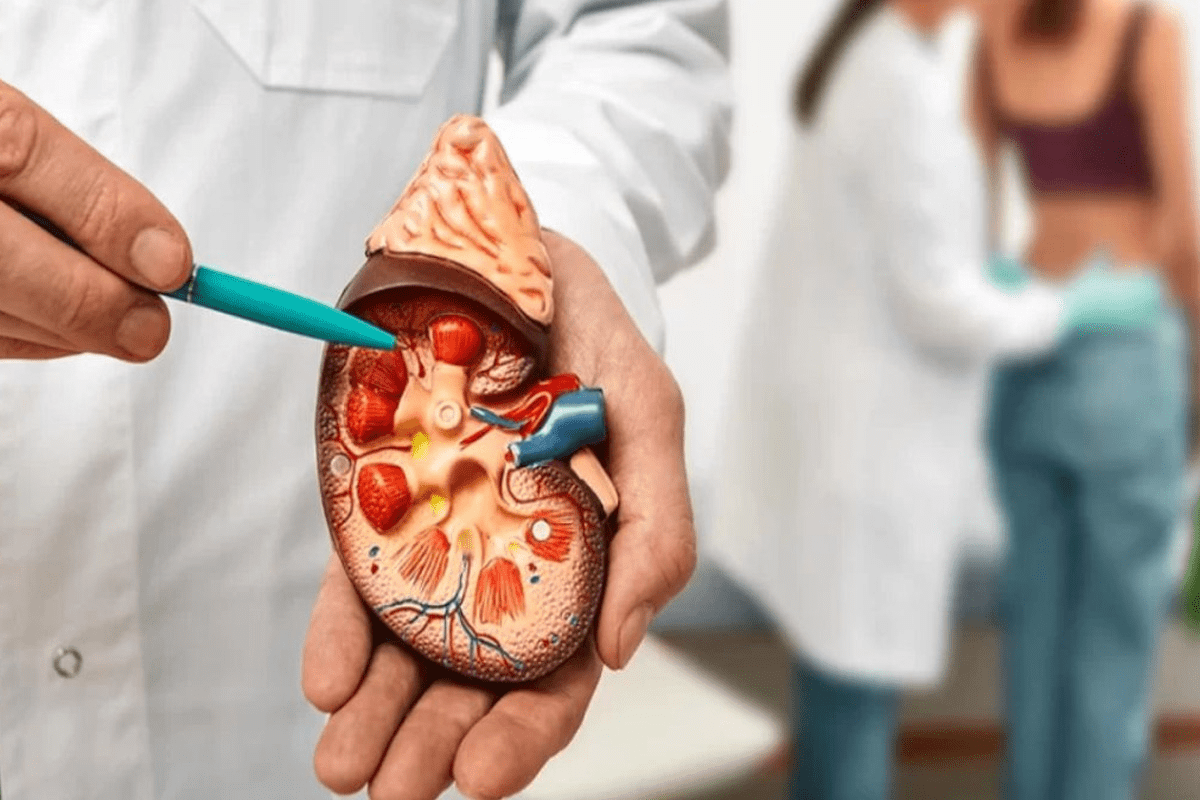Last Updated on November 26, 2025 by Bilal Hasdemir

Modern back pain devices use neurostimulation to block pain signals. This technology has changed how we treat chronic pain. It helps patients who haven’t found relief with other treatments.
How Neurostimulation Disrupts Pain Signaling Pathways
Neurostimulation sends electrical impulses to the body. It stops pain signals from reaching the brain. Devices like the back stimulator use these impulses to block pain pathways, helping those with chronic pain.
Spinal cord stimulation is a key part of this technology. It sends electrical impulses to the spinal cord. This helps reduce how much pain the brain senses, giving patients relief.
The Evolution from External to Implantable Technologies
Back pain devices have changed a lot over time. They’ve moved from external to implantable technologies. This change has made pain management better and safer, with implantable devices being more convenient.
Implantable devices, like spinal cord stimulators, are now more advanced. They are minimally invasive and rechargeable. This makes them easier to use and more effective for patients.
Traditional Spinal Cord Stimulators: The Foundation of Neuromodulation

Traditional spinal cord stimulators are key in managing chronic pain. They help treat back pain that other treatments can’t fix.
These devices send electrical impulses to the spinal cord. This stops pain signals from reaching the brain. Over time, technology has made these devices more effective and reliable.
1. Medtronic Intellis SCS System
The Medtronic Intellis SCS System is a top choice for spinal cord stimulators. It uses conditioned pain modulation for better pain relief. It also adjusts to the patient’s needs over time.
This system lets patients control their therapy with a patient controller. This way, they can make changes as needed.
2. Boston Scientific Precision Montage MRI SCS System
The Boston Scientific Precision Montage MRI SCS System is also well-known. It’s great because it’s full-body MRI compatible. This is good for patients who might need MRI scans later.
This system has many features, like multiple stimulation options and a rechargeable battery. It aims to give lasting pain relief with less need for recharging.
Both devices are big steps forward in treating chronic back pain. Knowing their features helps doctors choose the best treatment for their patients.
Advanced Back Stimulator Devices for Targeted Relief

Advanced back stimulator devices have changed how we treat chronic pain. They offer targeted relief with new technologies. These devices are a big step forward in spinal cord stimulation (SCS), helping manage chronic back pain.
Abbott Proclaim XR Recharge-Free SCS System
The Abbott Proclaim XR Recharge-Free SCS System is a top example. It’s a recharge-free way to manage chronic pain. This device uses Spinal Cord Stimulation (SCS) to target pain relief.
Nevro HF10 High-Frequency Therapy
Nevro’s HF10 High-Frequency Therapy is also promising. It uses high-frequency stimulation to treat chronic back pain. This method is effective without the tingling or numbness of traditional SCS.
| Device | Key Features | Benefits |
| Abbott Proclaim XR | Recharge-free, SCS technology | Convenience, targeted pain relief |
| Nevro HF10 | High-frequency stimulation | Effective pain management without paresthesia |
In conclusion, devices like the Abbott Proclaim XR and Nevro’s HF10 offer great solutions for chronic back pain. They are big steps in SCS technology, providing targeted relief and better patient outcomes.
Specialized Lumbar and Cervical Stimulators
Specialized spinal cord stimulators have changed how we treat chronic back pain. They focus on the lumbar and cervical areas. This helps patients with chronic pain live better lives.
The lumbar and cervical parts of the spine are very important. Pain here can really hurt a person’s ability to move and feel good. Specialized stimulators are made to tackle these pain issues with precision.
Stimwave Freedom Spinal Cord Stimulator for Lumbar Region
The Stimwave Freedom Spinal Cord Stimulator is made for the lumbar area. It uses new technology for precise pain management. It doesn’t need a battery change or recharge.
- Minimally invasive implantation procedure
- Programmable to meet individual patient needs
- No battery replacement or recharging required
Nuvectra Algovita Cervical Spinal Stimulator
The Nuvectra Algovita Cervical Spinal Stimulator is for the cervical area. It gives effective pain relief to those with chronic cervical pain. It’s known for its advanced features and focus on the patient.
“The Nuvectra Algovita has been a game-changer for patients with cervical pain, providing a new level of pain management that was previously unattainable.”
– Expert in Pain Management
Key features of the Nuvectra Algovita include:
- Advanced stimulation technology for effective pain relief
- Customizable programming for individual patient needs
- Rechargeable battery with long battery life
The Stimwave Freedom and Nuvectra Algovita are big steps forward in treating chronic pain. They offer targeted and effective pain relief. This makes life better for those with chronic pain.
Revolutionary Closed-Loop and Adaptive Stimulation Systems
Closed-loop stimulation systems are a big step forward in pain management. They adjust the therapy based on feedback in real-time. This makes the treatment more effective.
These systems use real-time feedback to control the therapy better. Closed-loop systems can change to meet the patient’s needs. This makes the treatment more personal.
Saluda Medical Evoke ECAP-Controlled Closed-Loop SCS
The Saluda Medical Evoke system is a leading example of closed-loop spinal cord stimulation. It uses ECAP signals to control the therapy. ECAP-controlled closed-loop SCS is a big step in neuromodulation technology.
A study found that ECAP-controlled closed-loop SCS greatly reduced pain in patients with chronic back pain. This shows the power of closed-loop systems in improving patient results.
Medtronic Adaptive Stim Technology
Medtronic’s Adaptive Stim Technology is another breakthrough in spinal cord stimulation. It adjusts to the patient’s needs in real-time for better pain relief. Adaptive Stim Technology aims to make spinal cord stimulation therapy more effective.
Adaptive stimulation offers better patient comfort and less need for manual adjustments. A clinical expert said, “Adaptive stimulation technologies are changing pain management. They offer more effective and personalized treatments.”
In summary, closed-loop and adaptive stimulation systems are changing spinal cord stimulation. They adjust in real-time for better patient results and a better quality of life.
Electric Stimulators for Back Pain: External and Internal Options
Technology has brought us electric stimulators for back pain. These can be used outside the body or implanted inside. They offer solutions for chronic back pain, both without surgery and with it.
These devices send electrical impulses to nerves. This stops or changes pain signals to the brain. It helps those who haven’t found relief with other treatments.
9. BioWave GO Portable TENS Alternative
The BioWave GO is a portable, non-invasive electric stimulator. It’s an alternative to traditional TENS units. It’s clinically proven to reduce chronic pain without surgery or drugs. It uses biofeedback technology for effective treatment.
Key features of the BioWave GO include:
- Portable and discreet design
- Non-invasive treatment
- Clinically proven efficacy
- No risk of drug interactions or side effects
10. StimRouter Neuromodulation System
The StimRouter Neuromodulation System is for chronic pain treatment. It’s a minimally invasive implant for an outpatient procedure. It targets pain through a peripheral nerve.
The system has an implantable electrode and a small receiver. It’s controlled by an external transmitter. This lets patients control their treatment and adjust settings.
External and internal electric stimulators have their benefits for back pain. The BioWave GO is non-invasive, while the StimRouter is more targeted. Knowing the differences helps patients and doctors choose the best treatment.
Innovative Spinal Implants for Structural Support
Keeping the spine stable is key, and new spinal implants are making a big difference. These implants help manage pain and give structural support to the spine. They help keep the vertebrae aligned and stable.
Vertiflex Superion Interspinous Spacer
The Vertiflex Superion Interspinous Spacer is made for treating lumbar spinal stenosis. It’s placed between vertebrae to maintain or restore space. This relieves pressure on the spinal nerves.
Its small size means it can be put in without a big surgery. The Superion Spacer is built to last, giving long-term relief from back pain.
Paradigm Spine Coflex Interlaminar Stabilization Device
The Paradigm Spine Coflex Interlaminar Stabilization Device is a new way to support the spine. It’s put in the lumbar spine to stabilize and provide dynamic support.
This device works by being placed between the vertebrae. It absorbs stress and gives stability. This helps reduce pain and improve spinal function.
ReActiv8 Implantable Restorative Neurostimulation System
The ReActiv8 Implantable Restorative Neurostimulation System is a big step forward for treating chronic low back pain. It sends electrical signals to the lower back muscles. This activates the natural healing process.
ReActiv8 is meant to be a long-term fix. It has a rechargeable battery that cuts down on the need for more surgeries. It’s set to send signals at the best times, helping muscles work right and easing pain.
Next-Generation Spinal Stimulation Implants
The world of pain management is changing with new spinal implants. These advanced devices aim to give better and more personal treatments for chronic back pain.
New spinal tech is making treatments more effective and varied. Experts say the future of pain care is in custom treatments. Now, thanks to new implants, this is becoming a reality.
Abbott Proclaim DRG Neurostimulation System
The Abbott Proclaim DRG Neurostimulation System is a key example of new spinal tech. It targets the Dorsal Root Ganglion (DRG), a key part of pain signals. This system gives precise pain relief for complex pain conditions.
Burst DR Stimulation Technology
Burst DR Stimulation Technology is another big step in spinal tech. It uses bursts of stimulation, not constant, for better pain relief and fewer side effects.
Research shows Burst DR Stimulation works well for those not helped by traditional spinal cord stimulation. It’s a great option for those looking for new treatments.
| Feature | Abbott Proclaim DRG | Burst DR Stimulation |
| Target Area | Dorsal Root Ganglion (DRG) | Spinal Cord |
| Stimulation Pattern | Programmable | Burst Pattern |
| Primary Benefit | Targeted Pain Relief | Improved Efficacy for Non-Responders |
In conclusion, new spinal implants like the Abbott Proclaim DRG and Burst DR Stimulation are leading in pain management. They offer hope for better patient outcomes and a better life.
Conclusion: Selecting the Right Back Pain Device for Optimal Results
Choosing the right back pain device is key to getting the best pain relief. Many things matter, like the type of pain and the patient’s health. Spinal cord stimulation has grown a lot, with new and advanced devices available.
When picking a back pain device, think about what each patient needs. For example, devices like the Medtronic Intellis SCS System and the Boston Scientific Precision Montage MRI SCS System have special features. Knowing about these can help make better choices.
Healthcare providers should look at each patient’s needs and the devices’ abilities. This way, they can help patients manage their pain better. The aim is to find the best spinal cord stimulation for pain control, leading to better lives.
FAQ
What is a spinal cord stimulator, and how does it work?
A spinal cord stimulator is a device implanted under the skin. It sends electrical impulses to the spinal cord. This disrupts pain signals to the brain, giving relief from chronic pain.
What are the benefits of using a back stimulator device for chronic pain management?
Back stimulator devices manage chronic pain without medication. They reduce the need for pain drugs and their side effects. They work well for those who haven’t found relief with other treatments.
How do I know if a spinal cord stimulator is right for my back pain?
Whether a spinal cord stimulator is right for you depends on your pain type and severity. It also depends on your health and previous treatments. A healthcare professional can help decide if it’s a good option for you.
What is the difference between traditional SCS systems and advanced back stimulator devices?
Traditional SCS systems offer basic spinal cord stimulation. Advanced devices have features like high-frequency therapy and adaptive technology. These may provide more effective and personalized pain relief.
Are there any risks or complications associated with spinal cord stimulator implants?
Like any implant, spinal cord stimulators carry risks. These include infection, device malfunction, and nerve damage. But these risks can be lowered by choosing an experienced provider and following care instructions.
Can I use a back stimulator device in conjunction with other pain management treatments?
Yes, back stimulator devices can be used with other treatments. This includes physical therapy, medication, or alternative therapies. Always do this under a healthcare professional’s guidance.
How long do spinal cord stimulator batteries last, and can they be replaced?
The battery life of spinal cord stimulators varies. Some are rechargeable, while others need battery replacement. Replacement procedures are usually less invasive than the initial implant.
What is the recovery time like after receiving a spinal cord stimulator implant?
Recovery times vary, but most can return to normal activities in a few weeks. It’s important to follow your healthcare provider’s post-operative care instructions for a smooth recovery.
Are there any non-invasive alternatives to spinal cord stimulators for managing back pain?
Yes, non-invasive options include external TENS units, physical therapy, and pain medications. The best option depends on your condition and should be discussed with a healthcare provider.
How do closed-loop and adaptive stimulation systems improve pain management?
Closed-loop and adaptive systems adjust therapy in real-time. They tailor the treatment to your needs, potentially providing more effective pain relief.
What are the advantages of using a spinal implant for structural support in addition to pain management?
Spinal implants can stabilize the spine, reducing pain and improving mobility. Used with pain management therapies, they offer a complete treatment for spinal conditions.
References
- Kapural, L., Yu, C., Doust, M. W., et al. (2024). Spinal Cord Stimulation versus Conventional Medical Management for Chronic Back and Leg Pain: A Systematic Review and Network Meta-Analysis of Randomized Clinical Trials. JAMA Network Open, 7(11), e2313907. https://jamanetwork.com/journals/jamanetworkopen/fullarticle/2826172






